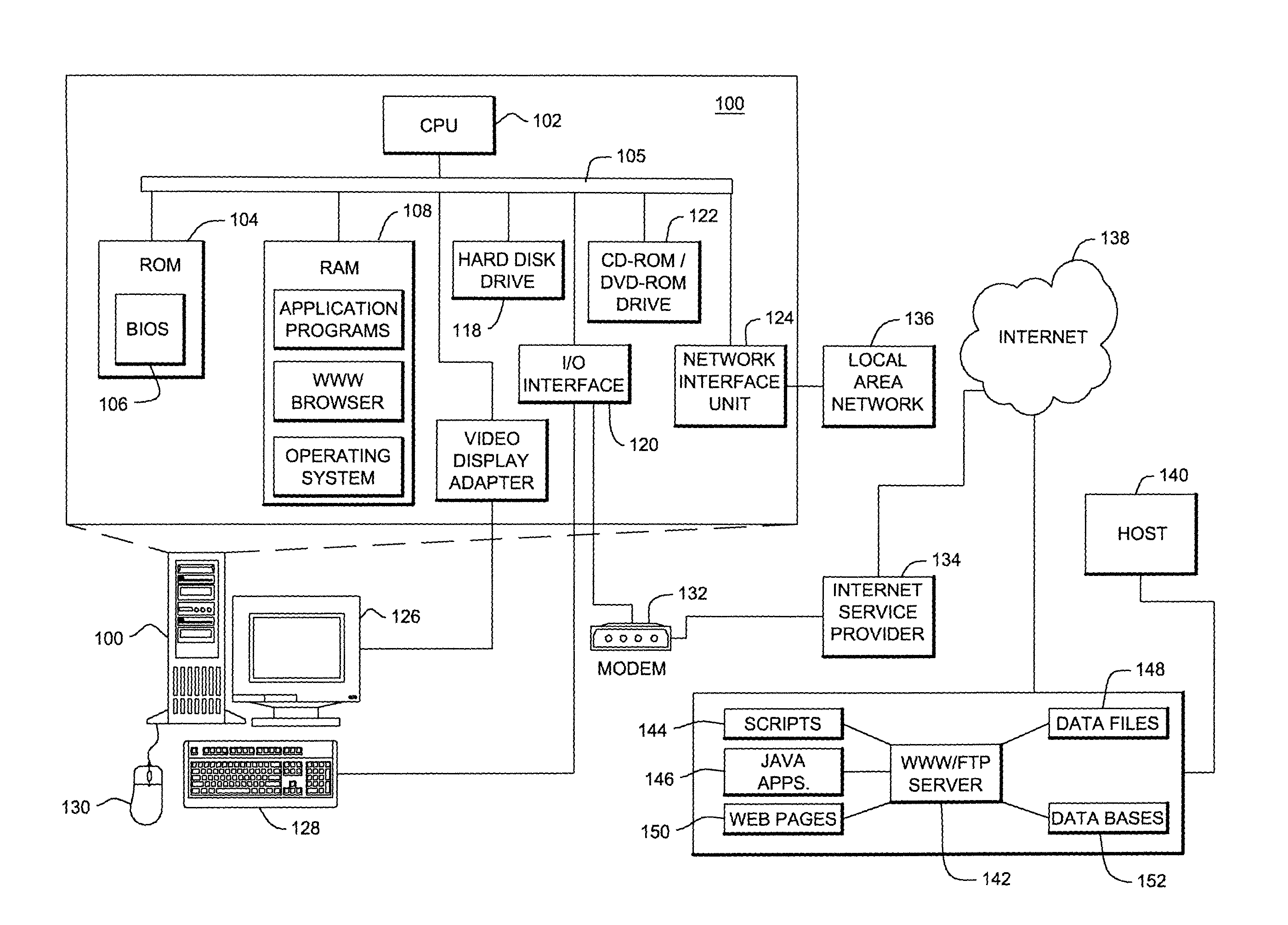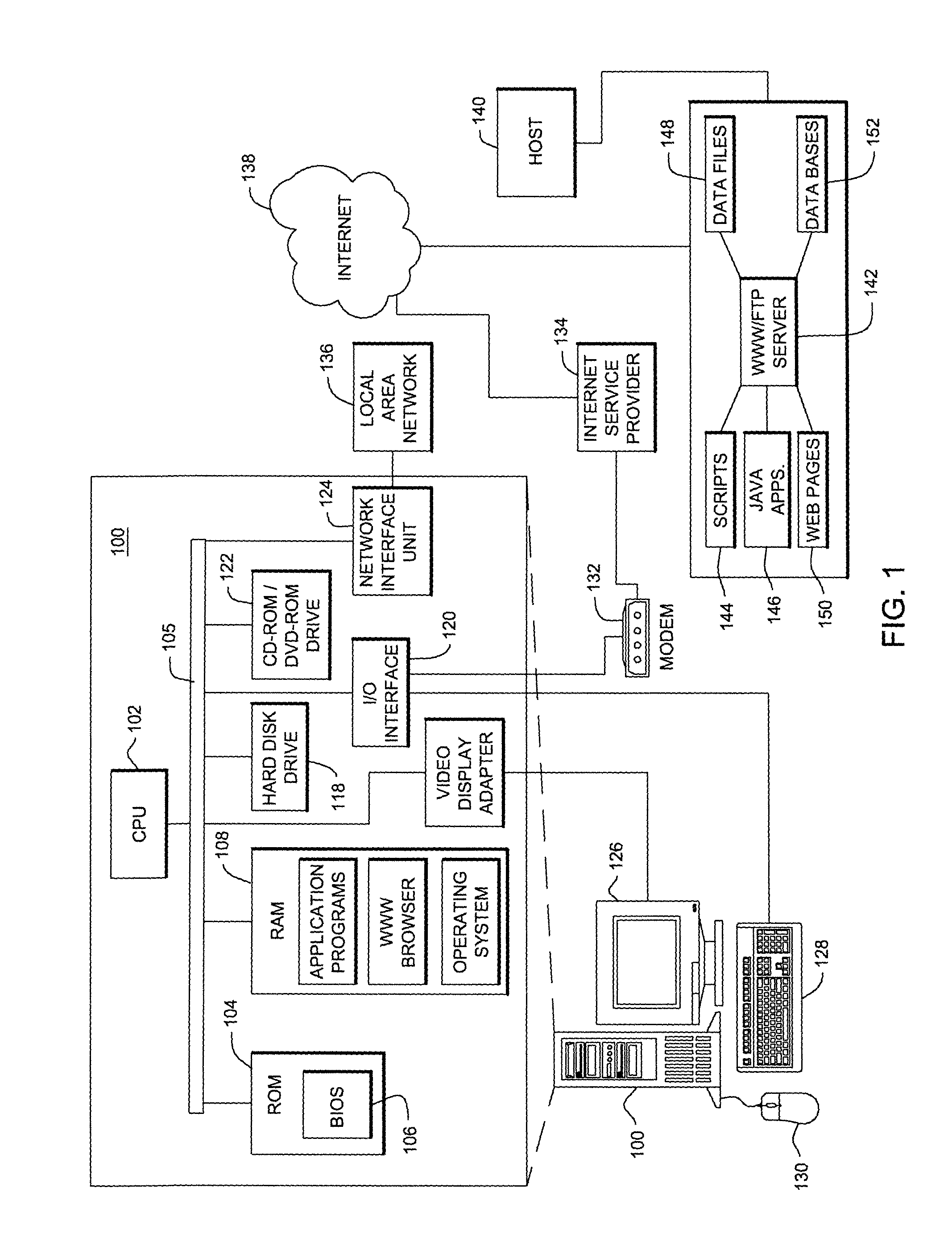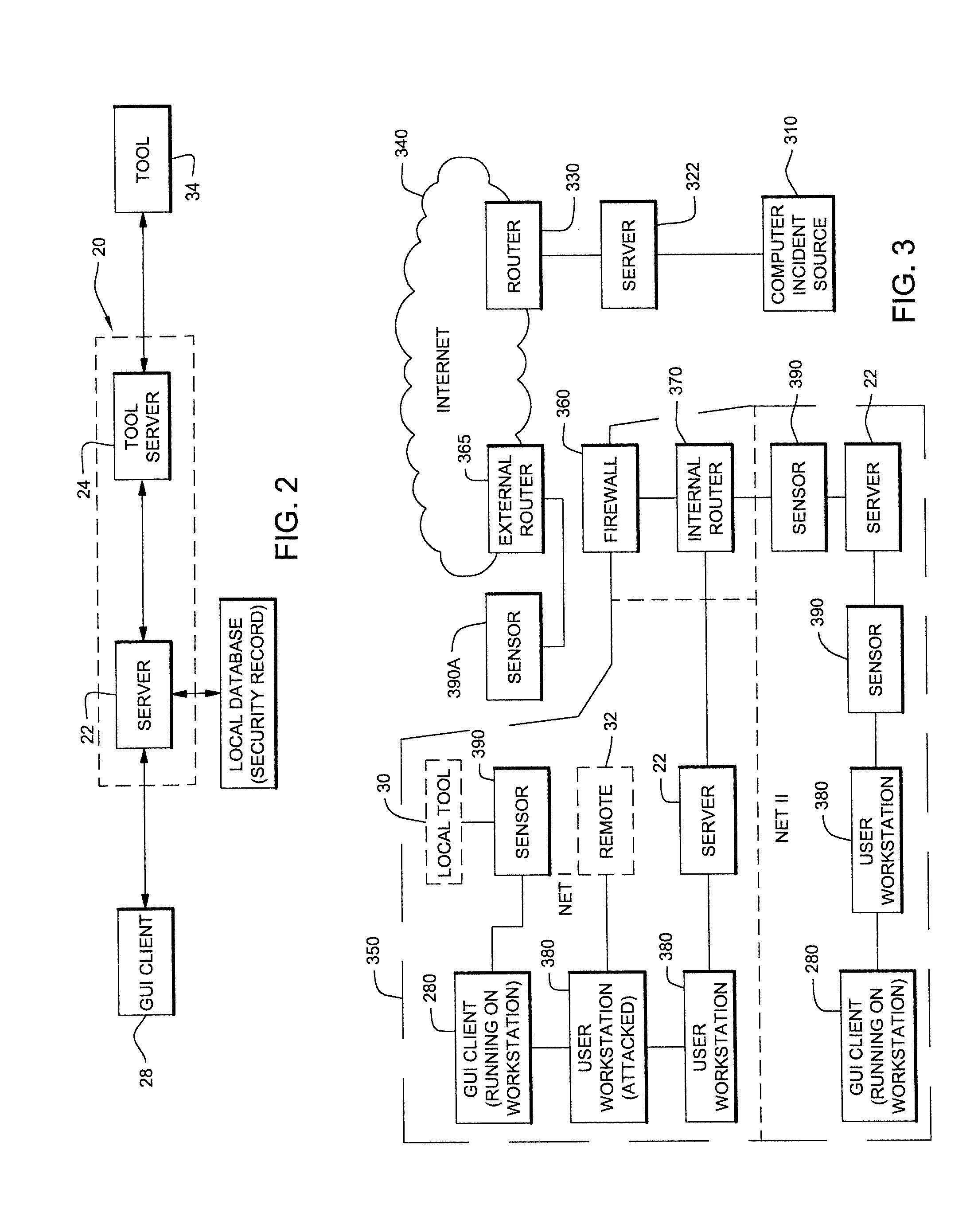Method and system for creating a record for one or more computer security incidents
a computer security and incident record technology, applied in the field of computer systems and security, can solve the problems of many different kinds of damage, wreak enough havoc, and disrupted service or attack on such computer systems, and achieve the effect of reducing the number of security incidents
- Summary
- Abstract
- Description
- Claims
- Application Information
AI Technical Summary
Benefits of technology
Problems solved by technology
Method used
Image
Examples
Embodiment Construction
[0059]The present invention may be embodied in program modules that run in a distributed computing environment. In an illustrative embodiment, the present invention is embodied in program module running on a personal computer as a client that accesses a server program module. Both program modules form a system for logging, investigating, responding, and tracking computer security incidents that can occur in a networked computer system.
[0060]Illustrative Operating Environment
[0061]Although the illustrative embodiment will be generally described in the context of an program modules running on a personal computer and a server, those skilled in the art will recognize that the present invention may be implemented in conjunction with operating system programs or with other types of program modules for other types of computers. Furthermore, those skilled in the art will recognize that the present invention may be implemented in either a stand-alone or in a distributed computing environment...
PUM
 Login to View More
Login to View More Abstract
Description
Claims
Application Information
 Login to View More
Login to View More - R&D
- Intellectual Property
- Life Sciences
- Materials
- Tech Scout
- Unparalleled Data Quality
- Higher Quality Content
- 60% Fewer Hallucinations
Browse by: Latest US Patents, China's latest patents, Technical Efficacy Thesaurus, Application Domain, Technology Topic, Popular Technical Reports.
© 2025 PatSnap. All rights reserved.Legal|Privacy policy|Modern Slavery Act Transparency Statement|Sitemap|About US| Contact US: help@patsnap.com



